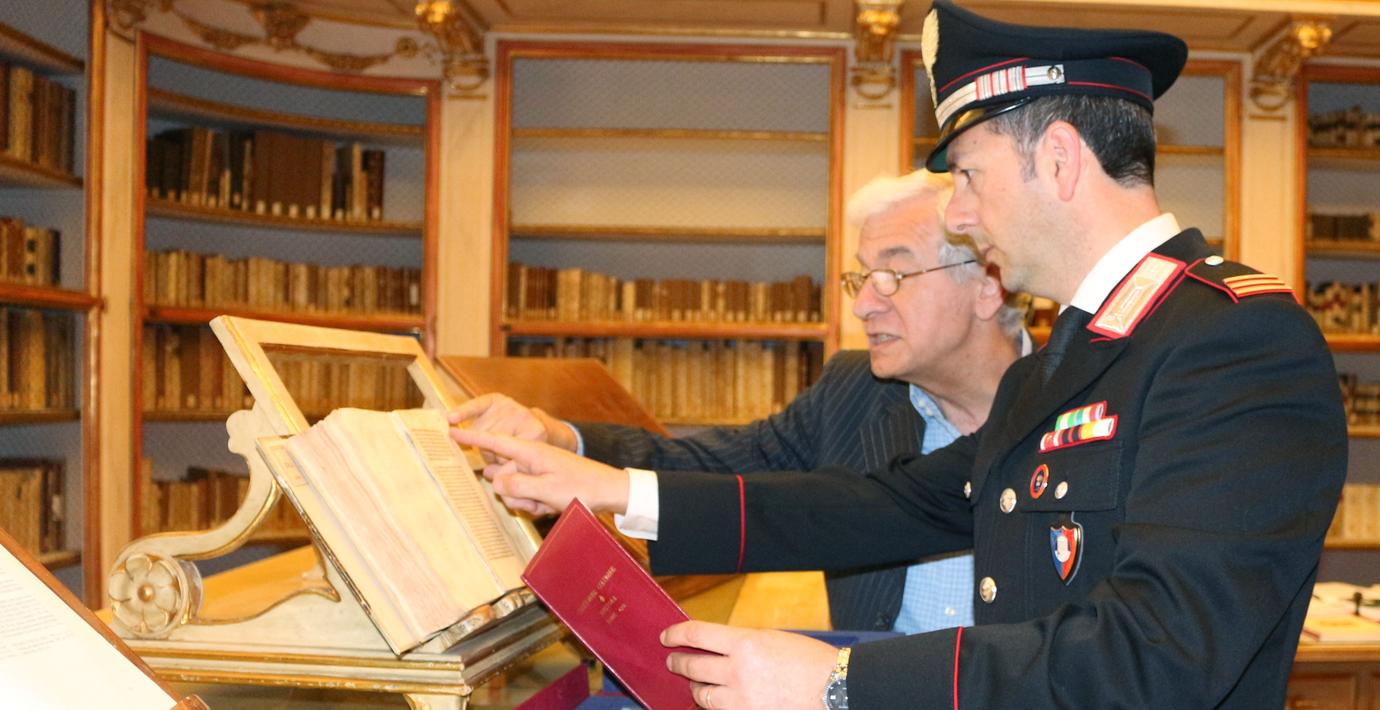
Columbus 523 år gamla brev tillbaka över Atlanten
Ett stulet brev som Christoffer Columbus skrev år 1493 har hittat tillbaka över Atlanten till sina rättmätiga ägare.
Upptäckaren skrev brevet till sina sponsorer Ferdinand och Isabella av Spanien och ett år efter ankomst var han fortfarande övertygad om att han nått ”Indien”, skriver Washington Post.
Efter ett anonymt tips 2010 kunde utredare konstatera att brevet inte längre fanns i Florens – utan hade sålts av en anonym person till en bokhandlare i New York redan 1990.
bakgrund
Columbus brev
Wikipedia (en)
Columbus's letter on the first voyage is the first known document announcing the results of the first voyage of Christopher Columbus that set out in 1492 and reached the Americas. The letter was ostensibly written by Columbus himself, on February 15, 1493, aboard the caravel Niña, while still at sea, on the return leg of his voyage. A post-script was added upon his arrival in Lisbon on March 4, 1493, and it was probably from there that Columbus dispatched two copies of his letter to the Spanish court.
The letter was instrumental in spreading the news throughout Europe about Columbus's voyage. Almost immediately after Columbus's arrival in Spain, printed versions of the letter began to appear. A Spanish version of the letter (presumedly addressed to Luis de Santángel), was printed in Barcelona by early April 1493, and a Latin translation (addressed to Gabriel Sanchez) was published in Rome around a month later (c. May 1493). The Latin version was swiftly disseminated and reprinted in many other locations—Basel, Paris, Antwerp, etc.—still within the first year of his arrival.
In his letter, Christopher Columbus claims to have discovered and taken possession of a series of islands on the edge of the Indian Ocean in Asia. He described the islands, particularly Hispaniola and Cuba, exaggerating their size and wealth, and suggested that mainland China probably lay nearby. He also gave a brief description of the native Arawaks (whom he called "Indians"), emphasizing their docility and amenability, and the prospects of their mass conversion to Catholic Christianity. However, the letter also revealed local rumors about a fierce man-eating tribe of "monsters" in the area (probably Caribs), although Columbus himself disbelieved the stories, and dismissed them as myth. The letter provides very few details of the oceanic voyage itself, and covers up the loss of the flagship of his fleet, the Santa María, by suggesting Columbus left it behind with some colonists, in a fort he erected at La Navidad in Hispaniola. In the letter, Columbus urges the Catholic monarchs to sponsor a second, larger expedition to the Indies, promising to bring back immense riches.
A slightly different version of Columbus's letter, in manuscript form, addressed to the Catholic monarchs of Spain, was found in 1985, part of the Libro Copiador collection, and has led to some revision of the history of the Columbus letter.
Omni är politiskt obundna och oberoende. Vi strävar efter att ge fler perspektiv på nyheterna. Har du frågor eller synpunkter kring vår rapportering? Kontakta redaktionen